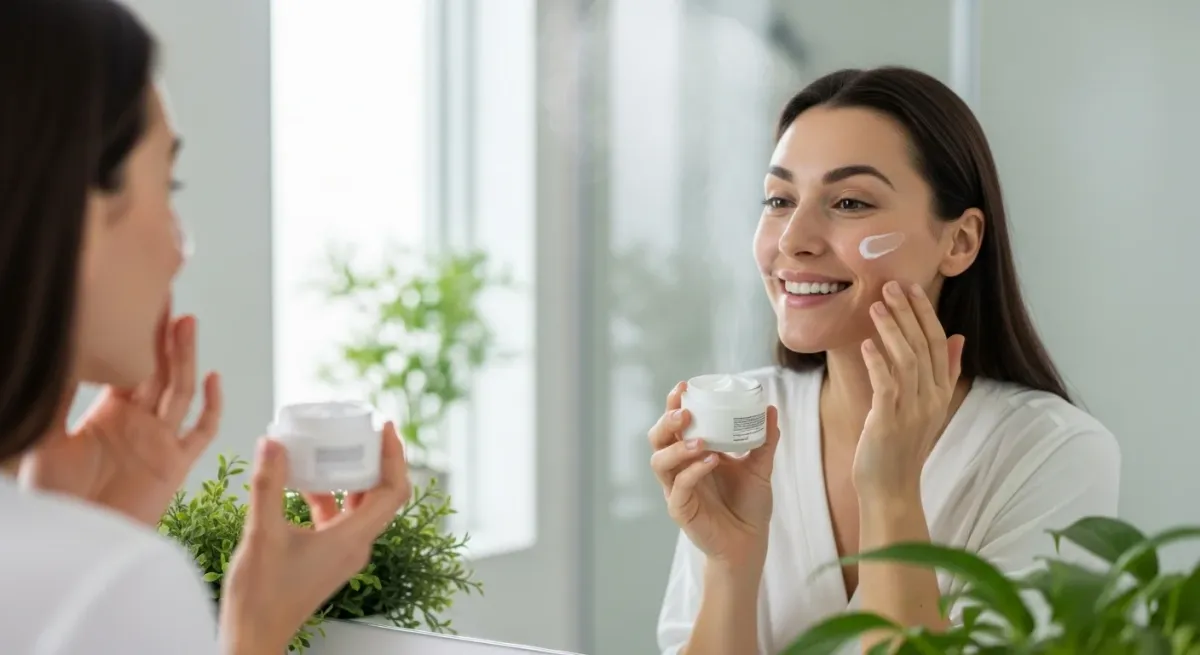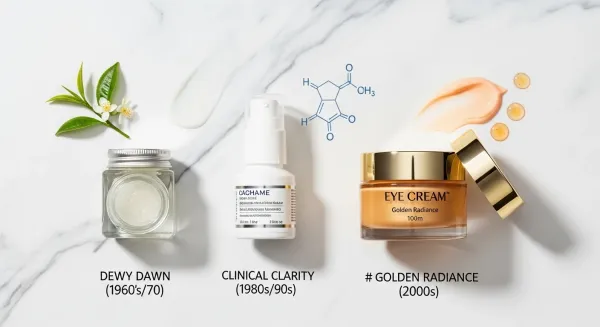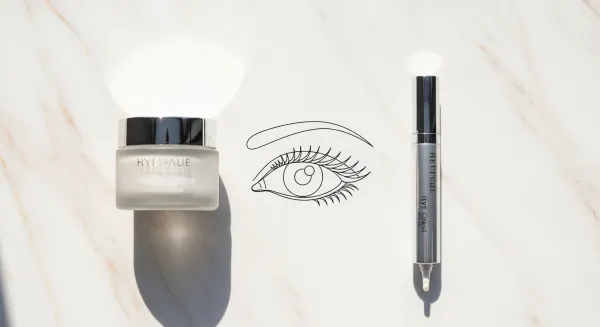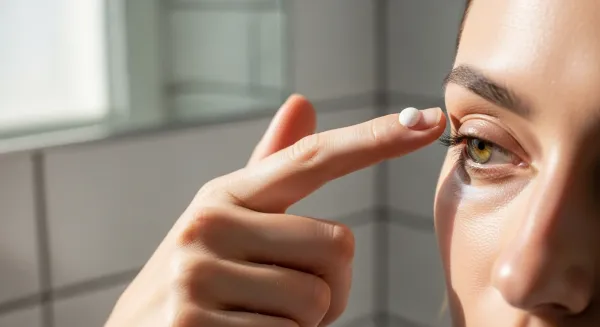The Ultimate Daily Routine for Combination Skin: Tips for Balanced Care
Discover the ultimate daily routine for combination skin to achieve balanced, healthy skin with easy tips!

Taking care of combination skin can be tricky, but with the right routine, you can achieve a healthy balance.
This guide will walk you through effective daily and weekly skincare habits, product recommendations, and lifestyle tips to keep your skin looking its best.
Let's dive into the ultimate daily routine for combination skin!
Key Takeaways
- Combination skin can be both oily and dry, so it needs special attention.
- A balanced morning routine includes cleansing, toning, moisturizing, and sun protection.
- In the evening, focus on thorough makeup removal and hydration.
- Weekly rituals like exfoliating and using masks can enhance your skincare routine.
- Healthy diet and good lifestyle habits also play a big role in maintaining skin health.
Understanding Combination Skin

What is Combination Skin?
Combination skin is like having two different skin types on your face! It usually means that the T-zone (forehead, nose, and chin) is oily, while the cheeks can be normal or even dry.
This unique mix needs special care to keep everything balanced.
Common Characteristics of Combination Skin
Here are some signs that you might have combination skin:
- Oily T-zone with enlarged pores
- Dry or flaky cheeks
- Breakouts in the oily areas
- Pores that are small or invisible on the dry parts
Why Combination Skin Needs Special Care
Taking care of combination skin can be tricky. We need to treat the oily and dry areas differently. Here’s why:
- Different needs: Oily areas need products that control shine, while dry areas need hydration.
- Avoid irritation: Using harsh products can make the dry areas worse.
- Balance is key: The goal is to keep the skin looking fresh and healthy all over.
Remember, every skin type has unique needs, including dry, oily, and combination skin. Here, we learn how to identify and care for your specific type of skin.
Morning Skincare Routine

Gentle Cleansing
To kick off our day, we need to start with a gentle cleanser. This helps wash away any dirt or oil that built up overnight. We want something that cleans without stripping our skin of its natural oils. A hydrating cleanser works wonders here!
Toning for Balance
Next up is toning. We should grab an alcohol-free toner to help balance our skin's pH. This step is crucial because it removes any leftover oil and preps our skin for the next products. Plus, it can help minimize those pesky pores!
Moisturizing Without the Shine
Now, let’s talk about moisturizing. We need a lightweight moisturizer that hydrates without making us look shiny. Look for products with ingredients like hyaluronic acid or ceramides. Keeping our skin hydrated is key!
Sun Protection is a Must
Finally, we can’t forget sunscreen! Applying a broad-spectrum SPF 30 or higher is essential to protect our skin from harmful UV rays. This step is non-negotiable if we want to keep our skin healthy and youthful.
Remember, a consistent morning routine can set the tone for our skin's health throughout the day!
Evening Skincare Routine

Removing Makeup Thoroughly
At the end of the day, we need to make sure our skin is clean. Using a good makeup remover is key! We can start with a gentle micellar water or a cleansing balm to wipe away all the makeup and dirt. This helps keep our pores clear and ready for the next steps.
Double Cleansing Method
After removing makeup, we should follow up with our regular cleanser. This is where the double cleansing method comes in. It ensures that our skin is super clean and free from any leftover impurities. Here’s how we can do it:
- Use a cleansing oil or balm to break down makeup.
- Rinse and then apply a gentle foaming or cream cleanser.
- Rinse again to reveal fresh skin!
Night Creams and Serums
Next up, it’s time to hydrate! We want to use a thicker night cream than what we used in the morning. Opt for a moisturizer packed with antioxidants to help our skin recover overnight. If we’re feeling fancy, we can also add a serum with retinol to target any specific skin concerns.
Targeted Treatments for Problem Areas
Finally, let’s not forget about those pesky problem areas! We can apply targeted treatments where needed, like a spot treatment for breakouts or a special cream for dark circles. This way, we’re giving our skin the best chance to heal and look its best by morning!
Remember, a consistent evening routine can make a huge difference in how our skin looks and feels!
Weekly Skincare Rituals
Exfoliating to Unclog Pores
Once a week, we should take some time to really focus on our skin. Exfoliating helps remove dead skin cells and keeps our pores clear. Here’s how we can do it:
- Use a gentle exfoliant that suits our skin type.
- Apply it in circular motions to avoid irritation.
- Rinse thoroughly and follow up with a moisturizer.
Hydrating Masks for Dry Areas
For those dry patches, hydrating masks are our best friends! We can:
- Choose a mask with ingredients like hyaluronic acid or aloe vera.
- Leave it on for the recommended time.
- Rinse off and feel the difference!
Clay Masks for Oily Zones
If we have oily areas, clay masks can help absorb excess oil. Here’s a simple routine:
- Apply the clay mask only to the oily parts of our face.
- Let it dry completely before rinsing.
- Follow up with a light moisturizer to keep our skin balanced.
Remember, taking care of our skin weekly can make a huge difference! It’s all about finding the right balance for our unique combination skin.
By sticking to these rituals, we can keep our skin looking fresh and healthy!
Choosing the Right Products
When it comes to finding the right products for our combination skin, it can feel like a bit of a puzzle. We want to balance our oily and dry areas without causing more problems. Here’s what we should keep in mind:
Ingredients to Look For
- Hyaluronic Acid: Great for hydration without the grease.
- Salicylic Acid: Helps with breakouts in oily areas.
- Glycerin: A fantastic humectant that draws moisture into the skin.
Ingredients to Avoid
- Alcohol: Can dry out our skin, especially the dry patches.
- Fragrance: Often irritating, especially for sensitive areas.
- Sulfates: These can strip our skin of its natural oils.
Product Recommendations for Combination Skin
Product Type | Recommended Product | Key Benefit |
|---|---|---|
Cleanser | CeraVe Renewing SA Cleanser | Gentle exfoliation |
Moisturizer | Youth to the People Superfood Air-Whip | Lightweight hydration |
Sunscreen | cocokind Daily SPF, SPF 32 | Protects without clogging pores |
Remember, it’s all about finding what works for us. Our skin can change, so don’t hesitate to switch things up if needed!
Diet and Hydration Tips

Foods That Benefit Your Skin
When it comes to keeping our skin happy, what we eat plays a huge role. Here are some foods we should consider adding to our plates:
- Fruits and Vegetables: Packed with vitamins and antioxidants, they help fight skin damage.
- Healthy Fats: Think avocados and nuts; they keep our skin moisturized and glowing.
- Whole Grains: Foods like brown rice and oats can help maintain our skin's balance.
Staying Hydrated
Drinking enough water is key! It helps flush out toxins and keeps our skin looking fresh. Here’s a simple way to remember:
- Aim for at least 8 glasses a day.
- Carry a water bottle to sip throughout the day.
- Add slices of lemon or cucumber for a refreshing twist.
Supplements for Skin Health
Sometimes, our diet might not cover everything. Here are a few supplements that can help:
- Omega-3 Fatty Acids: Great for reducing inflammation.
- Vitamin C: Helps with collagen production and brightening.
- Zinc: Supports skin healing and can help with acne.
Remember, a balanced diet and proper hydration can make a big difference in how our skin looks and feels.
In summary, taking care of our skin isn’t just about what we put on it; it’s also about what we put in our bodies. Let’s make mindful choices for a healthier glow!
Lifestyle Habits for Healthy Skin
Managing Stress
Stress can really mess with our skin. When we’re stressed, our bodies produce more cortisol, which can lead to breakouts and other skin issues. To keep our skin looking its best, we should try to manage stress through activities like:
- Meditation
- Yoga
- Spending time outdoors
Getting Enough Sleep
We all know that beauty sleep is a real thing! When we don’t get enough rest, our skin can look dull and tired. Aim for 7-9 hours of sleep each night to help our skin repair itself. A good night’s sleep can make a huge difference!
Regular Exercise
Exercise isn’t just good for our bodies; it’s great for our skin too! When we work out, we boost blood circulation, which helps deliver nutrients to our skin. Plus, sweating can help clear out our pores. Here are some fun ways to stay active:
- Join a dance class
- Go for a hike
- Try a new sport
Avoiding Skin Damaging Habits
We should all be mindful of habits that can harm our skin. Here are a few to watch out for:
- Smoking
- Excessive alcohol consumption
- Not wearing sunscreen
Taking care of our skin is a journey, and it’s all about finding what works best for us. Let’s make these lifestyle changes together for healthier, happier skin!
DIY Skincare Remedies
Homemade Masks
When it comes to treating our combination skin, we can whip up some awesome DIY masks right at home! Here are a few favorites:
- Oatmeal Mask: This is great for calming irritation and absorbing excess oil. Just mix ½ cup of ground oats with 2 tablespoons of warm water to form a paste. Apply it to your face for 3-5 minutes, then rinse with lukewarm water.
- Avocado Mask: Mash up a ripe avocado and apply it directly to your face. It’s super hydrating and perfect for those dry patches!
- Honey Mask: Honey is a natural humectant, meaning it draws moisture from the air. Spread a thin layer on your face and let it sit for about 15 minutes before rinsing off.
Natural Exfoliants
Exfoliating is key for keeping our skin fresh. Here are some easy DIY options:
- Sugar Scrub: Mix sugar with coconut oil for a gentle scrub that helps remove dead skin cells.
- Coffee Grounds: Use leftover coffee grounds mixed with a bit of water for a natural exfoliant that also smells great!
DIY Toners
Toners can help balance our skin. Here are a couple of simple recipes:
- Green Tea Toner: Brew some green tea, let it cool, and apply it to your face with a cotton ball. It’s soothing and packed with antioxidants.
- Apple Cider Vinegar Toner: Mix one part apple cider vinegar with two parts water. This helps to balance oil production and can be refreshing!
Remember, the best part about DIY skincare is that we can customize it to fit our unique skin needs. Let’s have fun experimenting!
Seasonal Skincare Tips
Adjusting Your Routine for Summer
When summer rolls around, our skin can feel a bit different. Lightweight products are key! We want to keep our skin hydrated without feeling greasy. Here are some tips:
- Use a gel-based moisturizer to avoid excess shine.
- Opt for a broad-spectrum sunscreen with at least SPF 30.
- Consider a mattifying primer if you have oily areas.
Winter Skincare Essentials
In winter, our skin often gets dry and flaky. To combat this, we should:
- Switch to a richer, creamier moisturizer.
- Use a humidifier at home to add moisture to the air.
- Don’t forget to exfoliate gently to remove dead skin cells.
Spring and Fall Adjustments
During spring and fall, our skin can be a bit unpredictable. Here’s how to handle it:
- Balance is crucial: Use products that cater to both dry and oily areas.
- Incorporate a gentle exfoliant to keep skin fresh.
- Adjust your sunscreen based on the weather; you might need less in cooler months.
Remember, our skin changes with the seasons, so let’s adapt our routines accordingly!
Common Mistakes to Avoid

When it comes to taking care of our combination skin, we often trip over some common mistakes. Let’s break down a few of these so we can keep our skin looking its best!
Over-Cleansing
We might think that washing our face more means cleaner skin, but over-cleansing can actually strip our skin of its natural oils. This can lead to dryness in some areas and excess oil in others. Instead, let’s stick to a gentle cleanser twice a day.
Skipping Sunscreen
We all know how important sunscreen is, yet many of us still forget it. Not applying sunscreen can lead to long-term skin damage. Even on cloudy days, we should make it a habit to apply a broad-spectrum SPF every morning.
Using Harsh Products
Sometimes, we might be tempted to use strong products to tackle oily areas. However, using harsh products can irritate our skin and worsen the situation. It’s better to choose gentle formulas that cater to both dry and oily zones.
Here’s a quick list of other mistakes to avoid:
- Ignoring Moisturizer: Every skin type needs hydration, even oily areas.
- Not Exfoliating: Regular exfoliation helps remove dead skin cells and unclogs pores.
- Following Trends Blindly: Just because a product is popular doesn’t mean it’s right for us.
Remember, our skin is unique, and what works for one person might not work for us. Let’s listen to our skin and adjust our routine accordingly!
Wrapping It Up: Your Daily Routine for Combination Skin
Well, there you go!
Taking care of combination skin doesn’t have to be a headache. Just remember to keep things simple and focus on balancing both the oily and dry spots on your face.
Stick to gentle cleansers, light moisturizers, and don’t forget your sunscreen! With a little patience and the right products, you’ll be on your way to healthier, happier skin.
Enjoy your skincare journey, and don’t be afraid to tweak your routine as needed!
Frequently Asked Questions
What exactly is combination skin?
Combination skin is when some parts of your face are oily, like your forehead and nose, while other areas, like your cheeks, are dry. Different cleanser types cater to specific needs: Gel Cleansers are suited for combination skin, as they are gentle and non-comedogenic. This skin type needs special care because hormonal changes during puberty can increase sebum production in some areas while leaving others dry, leading to a mix of oily and dry skin concerns.
How can I tell if I have combination skin?
You might notice shiny spots in the middle of your face and dry patches on the sides. If this sounds like you, you probably have combination skin. To find out if you have oily skin (which is common in the T-zone of combination skin), check if your face feels greasy after a few hours of washing it. If you notice shine, especially on your forehead, nose, and chin, you likely have oily skin in those areas. For the dry areas, you might notice your skin feels tight, looks flaky, or itches.
What products are best for combination skin?
Look for gentle cleansers, lightweight moisturizers, and non-greasy sunscreens. Products with ingredients like hyaluronic acid and niacinamide work well. The skin care products you choose will depend on your skin type. Gel Cleansers are suited for combination skin, as they are gentle and non-comedogenic. If you have acne-prone skin, look for cleansers and moisturizers that say "oil free" or "non-comedogenic," as these won't clog your pores. For dry areas, look for moisturizers that have ingredients like glycerin, hyaluronic acid, or shea butter. These help keep your skin hydrated. What's the Difference Between Hydration and Moisturization, and Why Do I Need Both? Hydration is about increasing the water content of your skin, while moisturization is about preventing that water from escaping. Think of it like this: hydration is like filling a bucket with water, and moisturization is like putting a lid on it to keep the water from evaporating. Hyaluronic acid is a great hydrator, while ceramides, fatty acids, and occlusive ingredients like shea butter and dimethicone help to moisturize and seal in that hydration.
How often should I exfoliate?
It's best to exfoliate once a week. This helps remove dead skin cells and keeps your pores clear. Limit exfoliation to 2-3 times a week. Over-exfoliating can cause redness, dryness, and increased breakouts. Opt for gentle chemical exfoliants rather than harsh physical scrubs. It depends on your skin type and the type of exfoliant you're using. Generally, 1-3 times per week is a good starting point. If you have sensitive skin, start with once a week and gradually increase as tolerated. Avoid over-exfoliating, which can cause irritation. Harsh exfoliating, whether with physical scrubs or chemical exfoliants, can strip away the skin barrier, leading to dryness, irritation, and increased sensitivity. It's like taking a sandblaster to your skin's protective wall. Exfoliate gently and in moderation, no more than 1-2 times per week.
Can my diet affect my skin?
Yes! Eating healthy foods like fruits, vegetables, and drinking plenty of water can help improve your skin's appearance. While diet isn't the sole cause of acne, a healthy diet rich in fruits, vegetables, and whole grains can support overall skin health. Staying hydrated is also important. Sugary drinks, refined carbs, and processed snacks often cause skin issues. Dairy can trigger acne for many people. Fried foods contribute to inflammation. Focus on cutting back on these. Replace them with whole, nutrient-dense foods. This helps your skin recover. Your skin renews itself approximately every 28 days, so allow for at least one full cellular turnover cycle before expecting dramatic results. A balanced diet rich in antioxidants, vitamins, and essential fatty acids supports healthy skin function. While your diet won't directly alter your skin's pH, it can impact your overall health, which in turn affects your skin. Staying hydrated by drinking plenty of water is also crucial. Besides using the right moisturizer, several lifestyle factors can support barrier repair: Healthy Diet: Eat a balanced diet rich in omega-3 fatty acids, Hydration: Drink plenty of water.
Is it okay to use the same products in the morning and at night?
Not always. In the morning, focus on protection, like sunscreen, while at night, you can use stronger treatments. The proper order of skincare product applications looks like this: Morning: Step 1: Cleanse, Step 2: Tone, Step 3: (Serum/Ampoule/Treatment), Step 4: Moisturizer, Step 5: Sunscreen (SPF 30 or higher). Night: Step 1: (Double) Cleanse, Step 2: Tone, Step 3: Treatment (Retinoids, Acne spot treatments, etc.), Step 4: Serum, Step 5: Moisturizer. Every daytime routine should incorporate sunscreen to protect the skin. This non-negotiable skincare step should also be the last step in your morning routine. Apply sunscreen with at least SPF30, if not more, to protect the skin from the sun's harmful UV rays. As your skin naturally repairs itself at night, your nighttime routine should be all about treatment and giving your skin what it needs.
What should I avoid if I have combination skin?
Try to avoid harsh products that can dry out your skin or make it too oily. Also, don't skip moisturizer! Teenagers should avoid products containing niacinamide, vitamin C, AHAs, and peptides before the age of 18, as these can be too irritating for young skin. Focus on gentle, hydrating ingredients instead. Teens with sensitive skin should avoid harsh ingredients like retinol, exfoliating acids, abrasive physical exfoliants, fragrances, and alcohol. These can cause irritation, redness, and breakouts. If you have acne-prone skin, look for cleansers and moisturizers that say "oil free" or "non-comedogenic," as these won't clog your pores. Because many beauty products contain preservatives, chemicals or fragrances that could irritate or dry out your skin, it's a good idea to introduce new products one at a time. Introducing too many new products at once can overwhelm your skin and cause further irritation.
How can I adjust my routine with the seasons?
In winter, use thicker creams for dryness, while in summer, lighter gels can help control oil. Common causes of skin barrier damage include: Sun damage or extreme weather, Allergens and irritants from products. These factors weaken the barrier, making the skin prone to sensitivity, infections, and dehydration. Your lifestyle choices can make or break your skin barrier. Besides using the right moisturizer, several lifestyle factors can support barrier repair. Different seasons can affect your skin differently - cold weather can make dry areas more pronounced, while hot, humid weather can increase oiliness in the T-zone. Adjust your products accordingly to maintain balance.




